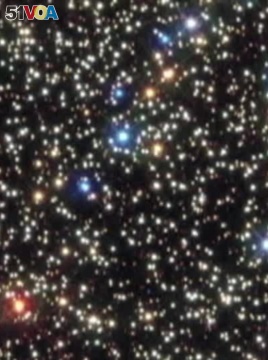July 17,2014
Of all the black things in the universe only the infamous "black holes" are so black that not even a tiny amount of light can bounce back. But scientists have managed to create material almost as black, and it has enormous potential use.
One of the reasons astronomical telescopes are built high up in the mountains and away from large population centers is the problem of stray light. Images of galaxies millions light years away are so faint that reflections even from the black walls inside the optical telescope can reduce their quality.

If you get stray light - i.e. light from non-target objects - bouncing around inside the telescope, it increases the signal to noise ratio and you do not get such a sharp image," said Ben Jensen, chief technology officer of the British firm Surrey Nanosystems.
The company claims its material called Vantablack absorbs 99.96 percent of electromagnetic radiation, including all visible light. Only the black holes absorb 100 percent of light.
Vantablack is made out of nanotubes, extremely small structures of perfectly-aligned atoms of pure carbon, often called the material of the 21st century.
Light hitting Vantablack simply loses itself in the maze of tiny, vertically aligned strands of nanotubes so you actually cannot see it, you see only the space around it.
“So if you think about this like a field of grass that is exceptionally long, and what happens, light particles, for want of a better word, go in and they bounce around in that field of grass and they are absorbed by the material, so very little will come back out," said Jensen.
Engineers managed to bind the new material to a matrix, such as aluminum foil, which means it could be used for coating the walls of optical and other instruments carried by scientific and reconnaissance satellites.
But Vantablack may also find application in stealth technology, making military aircraft even less visible to electromagnetic waves coming from radar.